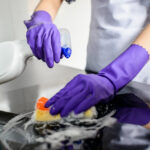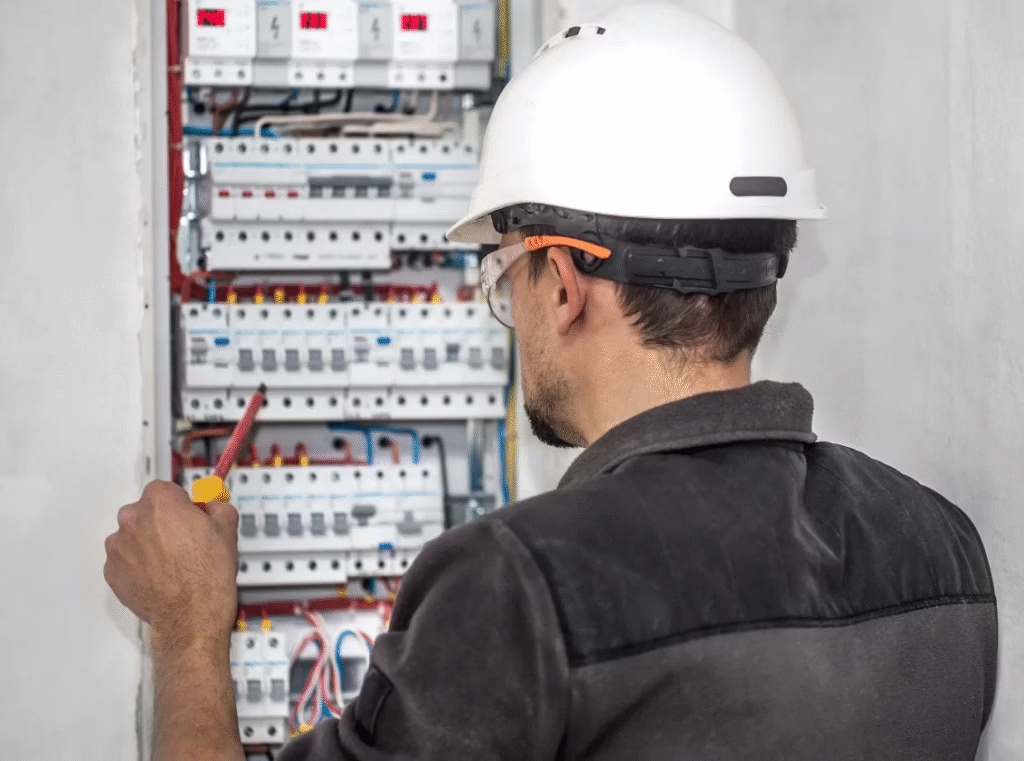Safety showers are essential components of workplace safety in labs, manufacturing plants, chemical facilities, and any environment where employees risk exposure to hazardous materials. Despite their vital role, these devices are often misunderstood, misused, or poorly maintained, leading to serious injuries and regulatory violations.
If your workplace has a safety shower, there’s a good chance you’re making at least one of the following mistakes. These errors are more common than you’d think, and correcting them could mean the difference between effective emergency response and preventable harm.
Let’s dive into the five most critical safety shower mistakes you might not even realize you’re making.
1. Infrequent Testing and Maintenance
The Mistake: Treating the safety shower as a “set-it-and-forget-it” installation.
Safety showers must be ready to deliver a high-volume flow of water at a moment’s notice. But like any mechanical system, they can fail due to sediment build-up, corrosion, valve issues, or changes in water pressure. A non-functioning safety shower in an emergency can be as dangerous as not having one at all.
What You Should Do Instead:
- Conduct weekly activations as recommended by ANSI/ISEA Z358.1 standards to ensure proper water flow and drainage.
- Perform annual inspections to check for compliance with flow rate (at least 20 gallons per minute), temperature (60–100°F), and pattern coverage.
- Use a test card or drench pattern gauge to confirm consistent water distribution.
- Maintain detailed logs of inspections and repairs.
Routine maintenance is not just good practice—it’s a regulatory requirement. OSHA inspectors often cite workplaces for neglecting this simple yet crucial task.
2. Poor Placement or Accessibility
The Mistake: Installing safety showers in out-of-the-way, inconvenient, or blocked locations.
In an emergency, every second counts. ANSI standards require that safety showers be located within 10 seconds of hazard zones—ideally within a 55-foot walking distance—and must be unobstructed and clearly visible.
Yet many facilities unknowingly violate these rules. For example, a shower placed behind a door, near sharp equipment, or in a remote corner is effectively useless in time-sensitive emergencies.
What You Should Do Instead:
- Conduct a hazard assessment to determine optimal shower placement.
- Ensure direct paths to the shower from all workstations.
- Avoid placing safety showers in areas prone to temperature extremes that can freeze pipes or cause scalding water.
- Clearly label each unit with highly visible signs and adequate lighting.
In short: if a worker has to think twice or move obstacles to reach a safety shower, it’s not in the right place.
3. Ignoring Water Temperature Requirements
The Mistake: Assuming cold tap water is sufficient for emergency use.
Water that’s too cold (below 60°F) can cause shock, hypothermia, or muscle spasms during a full 15-minute exposure. Conversely, overly hot water (above 100°F) can worsen chemical burns or cause thermal burns. Both scenarios discourage workers from remaining under the shower long enough to decontaminate.
What You Should Do Instead:
- Use a tempered water system to keep water within the ANSI-recommended range of 60°F to 100°F.
- Install mixing valves or thermostatic mixing units to regulate water temperature consistently.
- In cold climates, ensure pipe insulation or freeze protection to prevent dangerous temperature drops or frozen lines.
- For hot environments, consider recirculation systems to prevent water from heating excessively in idle pipes.
Water temperature might seem like a minor detail, but it plays a critical role in ensuring workers can—and will—use the safety shower as intended.
4. Lack of Employee Training and Familiarity
The Mistake: Assuming that employees will instinctively know how to use the safety shower in an emergency.
Even in high-risk environments, many workers have never been trained to use a safety shower. In a real emergency, panic sets in, and hesitation or incorrect use can lead to increased exposure or injury.
What You Should Do Instead:
- Incorporate hands-on safety shower drills into employee training programs.
- Include showers in new hire onboarding, refresher courses, and emergency preparedness exercises.
- Teach proper usage, including:
- Pulling the activation handle firmly.
- Remaining under the shower for a full 15 minutes.
- Removing contaminated clothing immediately.
- Assign safety officers to periodically observe and reinforce correct usage.
Training transforms a safety shower from a passive fixture into an active part of your emergency response plan.
5. Failing to Address Special Use Cases (Eyes, Clothing, Contaminated Runoff)
The Mistake: Relying solely on a single safety shower to handle all emergency needs.
While combination units (which include eye/face wash stations) are common, not every emergency is the same. A splash to the eyes requires gentler flow and precise targeting, while full-body decontamination needs a high-volume drench. Many facilities also overlook the disposal of contaminated runoff, potentially creating secondary hazards.
What You Should Do Instead:
- Use combination units with separate, ANSI-compliant eye and face wash components.
- Provide personal eyewash bottles as a first response, especially in large facilities where centralized showers may be farther away.
- Ensure the floor has adequate drainage and consider containment systems to capture contaminated water safely.
- Review local environmental regulations to ensure proper disposal of runoff water, especially if chemicals or biohazards are involved.
Customization, not a one-size-fits-all approach, is key to effective emergency preparedness.
Final Thoughts: Your Safety Shower is Only as Good as Its Management
Safety showers are lifesaving devices, but their effectiveness depends entirely on how well they’re maintained, placed, and integrated into your overall safety strategy.
By avoiding these five critical mistakes—neglecting maintenance, poor placement, improper water temperature, inadequate training, and lack of specialized support—you’ll dramatically increase the chances of a successful emergency response and reduce liability in the process.
Every employer has a responsibility to ensure that when an emergency occurs, their workers have every tool necessary to protect themselves. The safety shower is a cornerstone of that commitment—and it’s one you can’t afford to get wrong.
Summary Checklist
Here’s a quick reference list to keep your safety shower program compliant and effective:
✅ Weekly activation testing and annual inspections
✅ Proper placement within 10 seconds of all hazard areas
✅ Water temperature maintained between 60°F and 100°F
✅ Hands-on training for all employees
✅ Drainage and waste disposal systems in place
✅ Compliance with ANSI/ISEA Z358.1 standards
✅ Combination units for eye and body exposure
✅ Documentation of all maintenance and training efforts
Remember: When it comes to emergencies, preparedness is protection. A safety shower that doesn’t work, isn’t accessible, or isn’t used properly can cost far more than compliance—it can cost lives.





